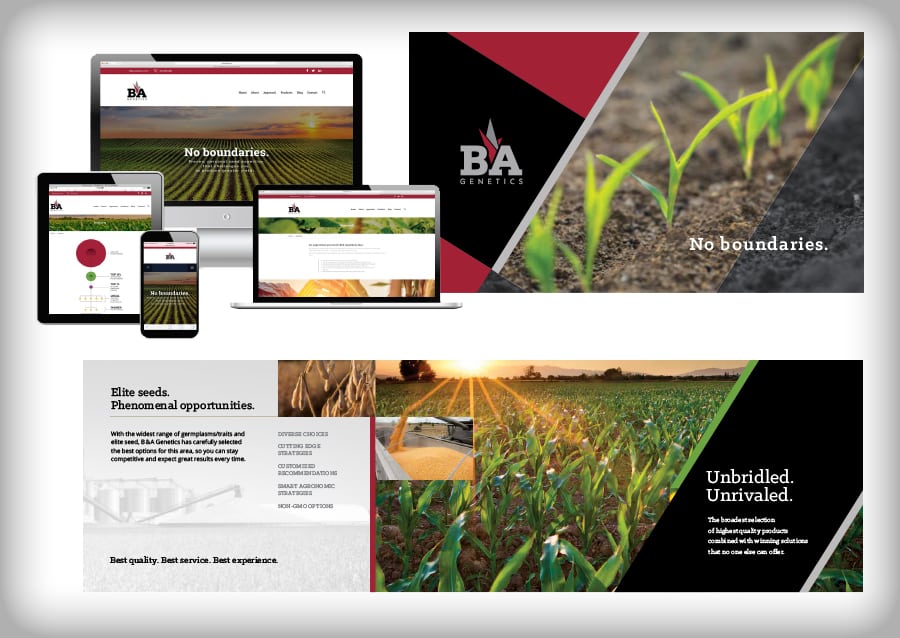
In today’s digital marketing environment, we have more options and more power at our fingertips to deliver our brand messages. But, as we all know, with great power comes great responsibility – especially when it comes to branding. It can be a challenge, but maintaining consistent messaging and visuals across all platforms – traditional and digital – is a vital element in branding.
A strong brand can help an organization:
- Increase awareness
- Reinforce a sense of community
- Build trust and loyalty
This is why consistency is so important. It’s all but impossible to build trust and loyalty if your messaging is all over the place. Simply put, your audience won’t have anything to latch onto or believe in.
The same goes for your visual identity. If you don’t develop and enforce rules regarding use of the logo, color and typography, your brand look will become muddled and confusing. That’s a recipe for driving away potential fans.
I liken consistent branding to a country’s flag. It doesn’t matter what country it is, the flag design rarely changes (unless there’s a coup or regime change). The people of the country rally around the flag’s colors and symbols. And, if they believe in what it stands for, they will literally wave the flag – wearing the colors proudly.

Take for example, the American flag. While it has evolved as the country grew, it has always been based on the same visual themes and core values – stars and stripes; red, white and blue; life, liberty and the pursuit of happiness; e pluribus unum… well, you get the picture.
It’s not all that different in the business world. The problem is that many companies don’t recognize that they are inconsistent in their branding or they fail to realize that they don’t have a strong brand in the first place.
So, how do you get to brand consistency nirvana? It starts with knowing your audience and how they feel about your brand, and it ends with arming your team with the right communication tools and the motivation to deliver those communications consistently. Here are some tips to get you started.

Start with research
Internally and externally, ask your audience and team members how they feel about your brand through surveys, focus groups, one-on-one interviews or a mix of all three.
When evaluating the results, ask yourself these questions:
- Are they aligned with your Mission, Vision and Values?
- Do you even have well developed Mission, Vision and Values statements?
- Are they simple and memorable or are they over-complicated and filled with corporate-speak (code for “forgettable” and “uninspired”).
If the answer is no to any of the above questions, use the research findings to create or strengthen your statements, and to fuel your journey toward building a stronger brand that resonates with your audiences.
Get your Architecture right
Do you have a complex brand structure? It would be wise to step back and make sure your structure is well developed and aligned with your company vision and goals. A well thought out and defined brand architecture will help your organization articulate how you deliver consistent communications to different target audiences.
Develop a Brand Messaging Platform
Once you’ve developed strong Mission, Vision and Values statements, use them as a launching pad for creating messages that can be used throughout organizational communications.
A Brand Messaging Platform expands on your value statements and defines your brand promise, personality, behaviors and tone of voice. It creates a roadmap for consistent messaging across all platforms.
Many companies are guilty of simple inconsistencies. Take answering the phone for example. One employee might answer with “Good morning, Consolidated Widgets and Things, Incorporated, how may I help you?” Another might say “Good morning, Consolidated, how may I help you?” And a third might just give you a simple “Good morning, CWT, how may I help you?”
A messaging platform can help define and standardize brand naming as well as all of the communications throughout your organization – even the way your employees answer phone calls.
Develop a Visual Brand System
If you don’t already have a strong system, it’s vital that you create one. A visual graphic system extends far beyond the logo and colors. A comprehensive system will define other elements like typography, iconography, graphic elements, photography and more.
Typography tends to be the forgotten element of the brand experience, and it’s a great example of where brands can fall flat. It’s not unusual to see organizations and their suppliers taking care to properly display the logo and colors. But more times than not, the typography is a mish mash of styles. It drives me nuts!
So, why does it happen? I think some of it comes from the sheer volume of free, available fonts. Or perhaps it’s laziness – people simply default to the fonts loaded on their computers. It could result from a lack of understanding about how vital typography is to expressing a consistent look and feel. But, I think one of the biggest culprits is the lack of training and enforcement with internal staff and suppliers.
The moral of this story is to not let any of your brand elements become an afterthought, or deteriorate into second-class status. That puts you on a slippery slope, eventually turning all of your hard work into a hodgepodge of broken rules. Believe me, I see happen frequently.

Build a brand guide
I suggest you formalize your Brand Messaging Platform and your Visual Brand System into a document that can be shared internally and with your key partners. It should include items like key message points that content developers can use to craft communications as well as visual rules and examples that designers can use to create consistent designs. It’s truly your roadmap and rulebook for brand consistency.
Launch your new or refreshed brand the right way
You spent a lot of time and resources to develop a strong brand and invested time in building a thorough brand guide. Now, it’s important to make sure your internal team is excited and motivated to properly communicate it, live it and act as true ambassadors of your brand. You can accomplish that with a well-coordinated internal brand launch that’s followed up with training and reinforcement.
If it’s engrained in the culture, you will be much more successful. For instance, some companies have used their brand values as a way to structure employee evaluations, or they have incorporated them into onboarding and training curriculum. Others implement brand-building activities throughout the year to reinforce the values and messages.
Most importantly, you should assign a brand “czar” or a team of brand managers that fully understand and approve communications to make sure they align with the brand – resulting in… wait for it… brand consistency nirvana! Ahhh.